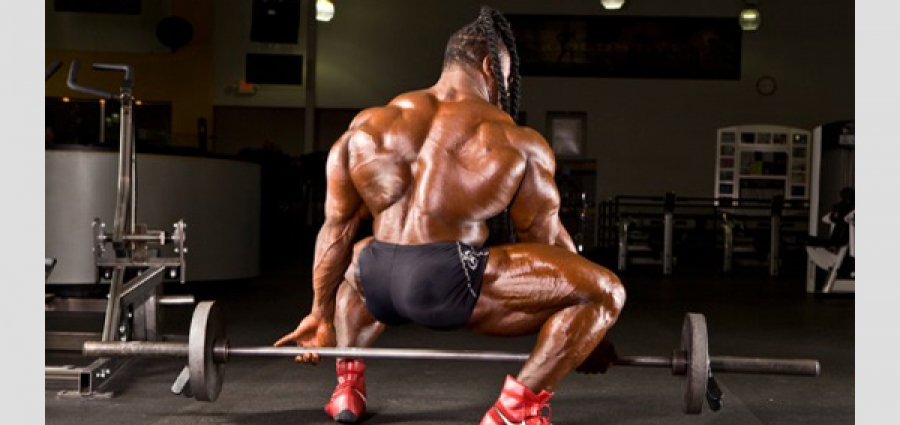The Jefferson squat is an old-school exercise rarely seen in the gyms of today, almost forgotten, and for good reason. Named after an outstanding weightlifter of the late 19th century, American champion.
The main goal is to pump the muscles of the legs, or rather the block of the muscles of the thighs, which is quite difficult to work out.
Content
Description
There are many names for this exercise: horse, saddle squat, Jefferson deadlift. The peculiarity of the exercise lies in the movement of the projectile (it is not on the shoulders, but between the legs) and the wide setting of the legs.
Muscle work
The main load goes to the quadriceps (quadriceps femoris), and significant tension is also formed in the buttocks. Additional work: inner thigh, trapezius muscles, hamstrings, calves and lower back. Also, there is static tension in the shoulder girdle, because the projectile is held by the hands. The saddle squat strengthens the muscles of the buttocks and thighs.
Applications and benefits
Jefferson squats or saddle squats should be classified as exercises of medium difficulty. Accordingly, it can be used only after mastering the classic squats. Jefferson's exercise has no categorical contraindications, but you need to be careful for those who have had an injury to the spine, knees or lower back. So be sure to exercise caution and listen to your body if you plan to use these squats with a recent injury.
Due to the new, non-standard load on the hips and buttocks, the muscles will get stressed, which will cause an increase in strength and mass. Therefore, use this type of squat if you have congestion or if you want to diversify your leg training.
Select the working weight of the bar so that you can perform 10-12 repetitions if the goal is mass, perform 5-8 repetitions if the goal is to increase strength. It is advisable to use discs of small diameter, so you can maintain the required depth of the squat. All the same, the Jefferson deadlift or saddle squat is intended for athletes from the average level of fitness. Beginners should do standard exercises;
Jefferson Squat Technique
Now let's move on to the details, hang the required number of small diameter pancakes and do the following:
- Position yourself so that the projectile is between the legs, and the body, exactly in the middle. Legs are shoulder-width apart or wider, toes turned 45 degrees outward;
- Bend over, bending your knees and keeping your back straight. Grab the bar with your right hand in a neutral grip in front of you, and with your left hand behind you. The grip distances of each hand must be equal in relation to the body;
- Take a breath and begin to slowly squat until your thighs are parallel to the floor. Keep your back as vertical as possible, head up and looking forward. Do not let your knees go beyond the line of socks;
- As you exhale, push off with your feet, returning to the starting position. Hold the bar on slightly bent arms to reduce the load on the shoulder joints. But do not strain your arms, Jefferson squats are performed due to the effort of the hips.
- Squats are performed at the expense of the hip, not the knee joints. At the start, both joints are involved, but with the vertical position of the legs, the movement is carried out mainly due to the hip joints. The wide setting of the legs and the turn of the socks makes it possible to fall forward less.
Improving Efficiency
To make saddle squats or the so-called Jefferson squats more productive, you need to follow a few points:
Make sure that your knees do not go beyond the level of the feet (socks) and that they do not go inward, otherwise such a collapse can harm your body. Look forward, and keep the body in a vertical position relative to the floor;
In order for the target muscle to receive the load, try to work with the force of the hips and exclude the inclusion of the hands. If the tension passes to the hands, the exercise will lose its meaning;
If you can't hold the bar with your grip strength, use straps to fully concentrate on your footwork.
The process of performing Jefferson squats should take place at a slow pace, lowering about 2 times longer than lifting.
How much: 10-14 reps for 3-4 sets.
This exercise is the secret weapon of Kai Greene (bodybuilder, participant in the Mr. Olympia contest) for pumping legs. In one of his interviews, he said that he improved the productivity of standard squats, learned to better strain the gluteal muscles, quadriceps and hamstrings. Also, it played a huge role in pumping the hip flexors and gluteal muscles.
Conclusions
Here is such an exotic type of squats, you can include it in your workouts if you wish. If for some reason you cannot perform classic squats, then change them to Jefferson.
Useful links
https://www.youtube.com/watch?v=m_e4_Oroz2s



